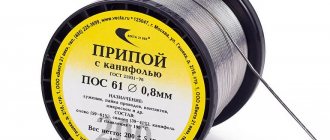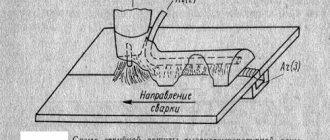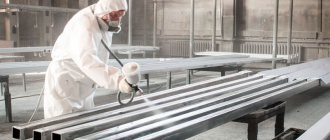Aluminum is one of the most common metals on earth. It is present even in the human body, so what can we say about the surrounding reality. Every home or personal car has aluminum functional elements, parts or assemblies that, alas, break quite often. These are furniture and window fittings, guides for doors and shutters, lock latches and other necessary little things.
They can be replaced with purchased new products, repaired, or made independently. In the last two cases, you may need to melt aluminum at home.
Characteristics of aluminum
It is not necessary to know all the characteristics of metal for homemade projects. But there are several points that can become significant or even dangerous in the work.
Aluminum lends itself well to casting and melts at a relatively low temperature of 660 °C. For reference: cast iron begins to melt at a temperature of 1100°C, and steel - 1300°C.
Therefore, melting aluminum at home on a gas stove is difficult to achieve, since home gas appliances cannot provide such a temperature. True, domestic “Kulibins” can do anything, but more on that later.
You can reduce the melting point of aluminum by grinding it into powder or using a finished powder product as a raw material. But here another property of aluminum becomes important. It is a fairly active metal, which, when combined with atmospheric oxygen, can ignite or simply oxidize. And the melting point of aluminum oxide is more than 2000 °C. When melting, oxide is still formed, but in small quantities; it is this that forms scale.
The same activity can play a bad joke if water gets into the molten metal. An explosion occurs. Therefore, if you need to add raw materials during the smelting process, you need to make sure that it is dry.
How to melt aluminum over a fire?
Aluminum is a metal that is widely used in industry and everyday life.
?> It is used to produce not only aircraft and ship parts, but also dishes and other utensils. Therefore, there is often a need to independently manufacture aluminum parts that have failed.
The ability of aluminum to melt at relatively low temperatures makes it possible to produce cast products from it in artisanal conditions. In order to independently produce cast aluminum products, you need to know the behavior of this metal at high temperatures and its physical and chemical properties.
Characteristics of aluminum
The melting point of aluminum depends on the purity of the metal and is approximately 660 °C. Its boiling point is 2500 °C.
Aluminum is distinguished by its lightness and ductility, so it bends well and can be processed by stamping.
This metal is an excellent conductor of heat and actively enters into a chemical reaction at high temperatures with atmospheric oxygen, forming an oxide film on the surface. It protects aluminum from further oxidation, but when scrap melts, it significantly affects the composition of the alloy. During the metal smelting process, the structure of aluminum changes.
When it cools sharply, internal stresses and shrinkage of the resulting alloy may occur. This must be taken into account when working with aluminum at home.
Technologies for home aluminum casting and necessary equipment
The principle of casting aluminum at home should be based on the technology for its production in production, adjusted for conditions that can be used at home.
Aluminum products are produced by casting in several ways. In domestic conditions, the most common and convenient method is the technology of casting molten aluminum into specially made molds.
Therefore, to carry out the process, two things must be ensured:
- build a furnace for melting aluminum scrap;
- create the desired shape to produce a cast alloy or a separate part.
The casting process must include several stages:
- Preparation of aluminum scrap, including cleaning from dirt, impurities and various fillers, as well as grinding it to a small size.
- Carrying out the smelting process in the planned way. When the metal is completely melted, slag formations must be removed from its surface.
- Filling the prepared mold with liquid aluminum melt. After solidification, the ingot is freed from the molding mass.
Let's consider how to melt aluminum at home, what designs of furnaces for melting metal can be used, as well as options for making molds yourself.
In order to melt aluminum, you need to heat it to a temperature close to 660 °C. It is impossible to reach such a temperature on an open flame of a fire. Therefore, a closed space is needed, which a homemade stove can provide. It can be heated by burning coal and wood or using natural gas.
You can also use an electric muffle furnace if you have one on the farm.
With a self-made stove, forced ventilation must be provided to maintain the combustion process.
1. The simplest version of a homemade fireplace can be made from old pots.
Its design is as follows:
- As a frame, use a steel container, for example, an old pan, on the side of which you need to make a hole to supply air through a connected metal pipe.
- Air can be forced through the hose using a vacuum cleaner.
- Coal is placed inside the device.
- Then the coal is set on fire and air is supplied to keep the fire from going out.
- A container for melting aluminum is first placed inside an improvised furnace structure and lined with coal on its sides. When it burns, uniform heat distribution is ensured.
- To prevent heat from being lost to the surrounding air, the top of the “pan” stove should be loosely covered with a lid, leaving a small gap for the smoke to escape.
An ideal design would be a firebox with an oval arch made from a masonry mixture used for heat-resistant bricks. You can use a flower pot of the desired size as a frame to create an oval vault.
After the mixture dries, a good firebox is obtained that can withstand several heats.
:
2. The second version of the furnace involves using the flame of a household gas burner to heat aluminum.
It can only be used for piece products made of aluminum weighing no more than 150 grams. An imitation oven is created by using two containers inserted into each other with a small gap. These can be ordinary cans from canned food.
The outer jar should be larger. A hole with a diameter of about 4 cm is made in it to ensure the supply of flame to the inner can.
The flame jet should be directed towards the opening of the can. Only the inner container is heated directly, and the outer one serves as a shell that retains heat. The top of the structure must be covered with a simulated lid, leaving a gap for the removal of combustion products.
Raw materials for smelting
If you have to melt aluminum at home, it is not used as a raw material due to the complexity of working with powdered metal.
You can purchase aluminum ingots or use regular aluminum wire, which is cut into small pieces with scissors and pressed tightly with pliers to reduce the area of contact with air.
If a particularly high quality of the product is not expected, then any household items, tin cans without a bottom seam or profile trimming, can be used as raw materials.
Recycled raw materials can be colored or stained, this is not a problem, the excess components will come off as waste. You just need to remember that you cannot inhale the fumes of burnt paint.
In order to obtain high-quality aluminum smelting at home from recycled materials, it is better to purchase ready-made fluxes, the task of which is to bind and bring to the surface of the molten metal all impurities and contaminants. But you can make it yourself from technical salts.
The coating flux is prepared from 10% cryolite and 45% each of sodium chloride and potassium chloride.
Another 25% of the total mass of sodium fluoride is added to the refining flux to obtain aluminum without porosity.
Personal protective equipment when melting
Melting aluminum at home is an unsafe process. Therefore, you need to use personal protective equipment (PPE). Even if such melting is needed once on minimal equipment, then at least you need to protect your hands, for example, with special welding gloves, which perfectly protect against burns, because the temperature of liquid aluminum is more than 600 ° C.
It is also advisable to protect your eyes, especially if melting occurs quite often, with goggles or a mask. And ideally, you need to work in a special metallurgist suit with increased resistance to fire and high temperatures.
If you need very pure aluminum using a refining flux, you should work in a chemical respirator.
Precautionary measures
To work with molten aluminum, you must use personal protective equipment. All exposed areas of the body, hands, and face must be protected.
REFERENCE! It is best to use welding gloves; they can withstand temperatures of more than 600 0C. This means of protection is the most basic, since the possibility of molten metal getting on your hands is very high.
It is also better to use goggles and a mask to avoid hot elements coming into contact with your face and eyes. To protect the entire body, you can find a metallurgist suit that has high fire resistance. When cleaning aluminum welding flux, a chemical respirator is used.
Casting shape
If you only need to cast pure aluminum for solder, then a casting mold is not needed. It is enough to use a steel sheet on which the molten metal will cool. But if you need to cast even a simple part, you will need a casting mold.
The casting mold can be made from sculptural plaster, namely gypsum, not alabaster. Liquid plaster is poured into an oiled mold, allowed to harden a little, shaking occasionally to release air bubbles, the model is inserted into it and covered with a second container of plaster. In a convenient place, you need to insert a cylindrical object into the plaster so that eventually a hole appears in the mold, the so-called channel, into which molten aluminum will be poured. When the plaster has completely hardened, the two parts of the mold are separated, the model is taken out, and the mold with the finished cast is connected again.
A casting mold can also be made from a mixture of 75% foundry sand, 20% clay and 5% coal sand, which is poured into a special box made of boards and compacted. The model is pressed into the compacted earth, the resulting imprint is sprinkled with talcum powder and graphite (coal dust) so that the cooled aluminum part can be easily separated from the mold.
A simple furnace for melting aluminum
Hello, dear readers and DIYers! Perhaps some of you have already been puzzled by the melting of metals. In this article, the author of the YouTube channel “NightHawkInLight” will share with you a simple technology for melting aluminum in the field.
Materials. — Aluminum scrap metal. Tools used by the author. - Shovel - Small fan - Steel strip - Pan. Manufacturing process. The first thing to do is dig a shallow hole in the ground for the fire. The flame and the coals themselves will be slightly below the surface of the earth. In this way, the heat will be better preserved, less blown out by the wind, and less smoke will be generated. By the way, cooking food this way is much easier.
The hole is approximately 60 cm in diameter. It is important that its walls are vertical and that it does not taper towards the bottom. So, the depth is not 90 cm.
The fire needs a constant flow of air and in order for it to burn well, being located below ground level, the author digs a narrow tunnel at an angle at a distance of several feet from the fire pit so that the tunnel eventually intersects with the fire pit at its lowest part, at the bottom .
The vent provides sufficient air flow to maintain an intense, clean burn. Later, the author will install an additional fan at the entrance to the tunnel to pump more air.
The master takes an inexpensive stainless steel pan as a crucible. In order to melt this metal, a temperature that is an order of magnitude higher than that required to melt aluminum is required.
The author takes soda cans, they are made of aluminum. And some aluminum shavings left over from turning. But any other available aluminum resource can be used.
The fan places the propeller in the ventilation hole and attaches it to any stick or PVC pipe. This project uses a small fan that can easily be powered by a small solar panel. However, you can install a larger propeller, then the flame will burn even hotter.
As the aluminum cans melt, more space is freed up in the crucible and more raw materials can be added. When the handles of the pan came off the rivets, it was revealed that they were made of aluminum. But the process did not stop there. I had to put the pan directly on the fire.
Out of pure interest, the author decides to pour liquid aluminum into a pre-prepared hole in the ground. The moisture present in the ground caused several bubbles to appear. It is worth taking this effect into account.
The author's video can be found here.
Source
Become the author of the site, publish your own articles, descriptions of homemade products and pay for the text. Read more here.
Melting crucible
Melting aluminum at home requires a special container with a spout made of refractory material. This is the so-called crucible. Crucibles can be porcelain, quartz, steel, cast iron, made of corundum or graphite. At home, you can use a purchased crucible or make one, for example, from a piece of steel pipe of sufficiently large diameter. True, for this you need a grinder, a welding machine and skills in using these tools.
The dimensions of the crucible depend on the required amount of aluminum to be melted. This ladle should be heated evenly, and its heat should be transferred to the raw materials.
Melting furnaces
The technology for melting aluminum at home is quite simple. In a special ladle, scrap aluminum is heated to a temperature exceeding the melting point of this metal, the melt is kept in a heated state for some time, slag is removed from its surface, then the pure metal is poured into a mold to cool. The melting time depends on the design of the furnace, that is, the temperature that it can provide.
If a blowtorch or gas torch is used, they heat the aluminum from above. True, the oven is still made of bricks in a well without a binding solution, inside which coals will burn to heat the container from below and maintain it in a heated state.
The design of the furnace looks approximately the same if the crucible is heated from below using ordinary firewood and a hair dryer. Only in this case, the firewood is stacked in a brick well not on the bottom, but on a grate located on the first row of bricks, and in this row there is a hole left for a metal pipe put on the neck of the hair dryer and secured to it with electrical tape. The crucible in this case is a tin can, naturally not aluminum, in which diametrically opposite through holes are made at a short distance from the top. A steel rod is threaded through these holes, by which the can must be suspended in the oven. A hair dryer is needed to pump hot air into the space between the bricks and the crucible. Sometimes a metal barrel is used instead of bricks.
If melting must occur quite often, then you can make a muffle furnace with your own hands with vertical loading of the crucible or buy a ready-made one.
Details
Technological process - video instructions
A refractory container (crucible) is used to heat the metal.
Products are used from materials such as steel, porcelain, corundum, cast iron. At home, a container made of a wide iron pipe or a ready-made crucible is used. To make it, you only need a grinder and a welding machine. The volume of the crucible can be different and is selected individually; it heats up evenly. The metal must be crushed and melted during heat transfer. The melting point must be reduced before heat treatment in order for the state of the metal to change more quickly. To do this, it is crushed into small parts. This is often followed by oxidation or combustion. Aluminum oxide is formed, which changes its state at higher temperatures. This substance is removed after remelting the metal along with the rest of the slag.
REFERENCE! When melting aluminum at home, you must avoid getting liquid into the crucible. This is because the evaporation of water can cause an explosion. Therefore, before lowering the metal into the crucible, you need to make sure it is completely dry.
Mostly aluminum wire is melted. To do this, it is divided into pieces with scissors, and then compressed with pliers. This method prevents the metal from being exposed to oxygen. If you do not plan to obtain high-quality parts, then grinding raw materials is not necessary.
If you need to produce molten aluminum at home, you will have to model the casting technology yourself. The material must first be cleaned of dirt, slag and impurities. Large workpieces must be divided into several small ones. Casting is carried out according to the instructions; the most convenient option is used for melting. Slag must be removed from the surface of the fluid substance. Molten aluminum is poured into a mold, which must be broken after the metal has solidified.
Heat sources used
In order to melt aluminum at home, you can use:
- Melting aluminum in a muffle furnace, which can be done independently. This method is very effective and allows you to quickly convert the metal into liquid form.
- Blowtorch. It can be used to melt small amounts of aluminum.
- Torch - rarely used.
The hearth is made of bricks, and the frame is made of a metal container. On one side, a drill is used to make a hole for oxygen supply. A hair dryer, vacuum cleaner or other similar device is connected to a metal tube. The crucible is placed in the hearth after the fire has been lit. For better heat treatment, the coals can also be placed on the sides. To avoid losing heat, you can make a lid, leaving a hole for the smoke to escape. It is not worth making a furnace if the metal needs to be melted only once.
Melting aluminum on a gas stove also takes place. An ordinary gas stove can heat metal to the required temperature. Small pieces of aluminum will melt in about half an hour.
A tin can is usually used as a crucible. The jar is placed in another jar so that the gap between the two is about one centimeter. This is necessary for uniform temperature distribution. In the larger jar, you need to make several holes to provide fire access. The diameter of these holes should be 3-4 cm in diameter. In this case, the divider on the burner does not need to be removed. In this way, you can achieve uniform heating of the aluminum can. The larger jar is covered with a lid to prevent heat from escaping.
Making a mold for casting - instructions
If you need to do something simple, then making a special mold is not required; the metal can be poured onto a steel sheet.
If the product is more complex, then you need a mold that can be made from the following materials:
- - clay;
- - plaster;
- - liquid glass;
- - sand;
- - coal ash.
There are two ways to pour the alloy into a mold - open and closed.
Open is the easy way. The metal that has been melted is poured into an ordinary container, cup, tin can, and so on. After the alloy has cooled, the blank is removed from the container. If it doesn't matter what shape the metal object will be, leave the aluminum on a durable surface.
Forming elements are used for complex castings, when the product must meet specified parameters. In open pouring, silica is often used. The item is made from two containers containing compacted earth. The silica pieces are compressed and a casting model is placed between them. This way you get a clear imprint of the desired part. The model is removed, and hot aluminum is poured into the mold. With the closed casting method, river sand is taken and mixed with liquid glass.
For one-time casting, you can use plaster. Models are made from foam plastic or paraffin.
IMPORTANT! The use of these materials is only possible in an open space with good air access.
The foam is not removed from solid plaster, but is filled with molten aluminum. Its combustion products are harmful to human health.
Melting with a blowtorch
Melting aluminum at home with a blowtorch should not take place indoors. In addition to raw materials, a blowtorch, crucibles and bricks, you need to prepare firewood, pliers and a steel rod.
So, a small well was made from bricks so that a ladle with aluminum and a small steel sheet could be installed on top. A fire is lit in the well, which must burn out a little to form coals.
Next comes the actual melting of aluminum at home. Step-by-step process instructions:
— A container with raw materials is placed on the bricks. It needs to be heated for about 15 minutes.
— After this, the burner of the blowtorch is turned on at full power and the aluminum is heated from above.
— The process begins within a few seconds, but in order for the heating to be uniform, the metal in the container must be carefully mixed with a steel rod, holding it with pliers (remembering to wear gloves). You can do without a rod by periodically shaking the bucket using the same pliers, but very carefully.
— When the liquid becomes homogeneous, you need to take the container with pliers and pour the contents onto the calcined steel sheet so that all the resulting scale remains in the ladle, and only clean metal gets on the sheet to harden.
This is how pure aluminum is usually obtained from recycled materials if aluminum parts need to be soldered with it.
Melting with wood or gas
Aluminum smelting at home using wood occurs in lightweight collapsible furnaces. The disadvantage of this method is the uncontrollability of the process. It is not possible to increase or decrease the heating temperature. It is possible to intervene in the process only by removing the container with aluminum from the heat.
Melting aluminum at home using gas is the only possible option for an apartment. The container needs to be heated for a long time, periodically draining the molten metal. In this case, casting is performed in layers. To work, you will need two metal containers of such diameters that one fits over the other. The smaller one serves as a crucible. It is placed with a crowbar, for example, cut aluminum wire, on the burner from which you need to remove the flame divider of a household gas stove. A larger capacity will have to be worked on first. About a dozen small holes are made in its bottom. Bolts are screwed into two or three of them, which act as handles, by which the hot container can be lifted with pliers.
This container is placed upside down on the crucible. This design allows aluminum to be heated. Periodically, the upper container must be removed and the scrap mixed with a metal rod or knife. Before draining the molten metal, the slag must be removed from its surface.
Melting aluminum in a muffle furnace
A muffle furnace is already quite a serious piece of equipment for producing high-quality molten metal. Therefore, when melting, flux is used to clean aluminum from impurities. And this is almost a production process, and not smelting aluminum at home.
The step-by-step instructions also include several points for preparing raw materials:
- First, flux is melted in a crucible, which must be taken in an amount of 2 to 5% of the weight of aluminum, and then scrap is added to it.
- How active the flux is can be determined by the surface of the melt - it should be mirror-like. If this is not the case, a little more flux is added to the melt, then it will be necessary to add it before the end of the melt to make it easier to remove the slag from the surface of the metal with a steel spoon.
- Melting should be carried out at approximately 700-750 °C. This is the temperature of the red glow.
- During the smelting process, it may be necessary to add raw materials to the crucible, since the molten metal is greatly reduced in volume.
- Refining flux is added, if necessary, at the end of the melt in an amount of 0.25% by weight of the molten metal. Maintaining such a proportion at home is not an easy task. After adding flux, the melt must be mixed with a spoon, let stand for about 5 minutes, then remove the slag.
- When, as a result of heating, the aluminum has turned into a homogeneous shiny drop, the crucible must be kept in the oven for some time so that the metal becomes more fluid.
- Then the aluminum from the crucible through the spout (at this moment it becomes clear why such a ladle is needed) is poured into the mold in a thin continuous stream.
- After complete cooling, the mold is carefully divided into halves, the finished part is removed from it, which still needs to be finally processed: drill holes, if necessary, clean and sand the surface with sandpaper. That's all. The process is complete.
So don’t be alarmed in advance if you have to melt aluminum scrap at home in order to get pure metal or make a part to replace a broken one. Serious professional skills are not at all needed to organize such a foundry. The desire and skillful hands of an ordinary amateur craftsman can work wonders.
Melting aluminum at home - instructions
Aluminum has been used in everyday life and industry for many years. Thanks to its properties, a variety of products can be made from it.
It is possible to melt aluminum at home, since it does not require high temperatures. To carry out such a procedure, you only need to know the properties of the metal.
After reading the article, you will learn how to melt aluminum at home - step-by-step instructions.
Characteristic
The melting point of materials is determined by their purity. Due to its lightness and good ductility, aluminum is suitable for various technological procedures. Under the influence of high temperatures, a reaction with oxygen occurs.
An oxide film appears on the surface of the metal, protecting it from oxidation and corrosion. During melting, aluminum changes its structure, so it needs a protective coating. With sudden cooling, additional internal stress and shrinkage appear.
Technological process - video instructions
A refractory container (crucible) is used to heat the metal. Products are used from materials such as steel, porcelain, corundum, cast iron. At home, a container made of a wide iron pipe or a ready-made crucible is used. To make it, you only need a grinder and a welding machine. The volume of the crucible can be different and is selected individually; it heats up evenly. The metal must be crushed and melted during heat transfer.
The melting point must be reduced before heat treatment in order for the state of the metal to change more quickly. To do this, it is crushed into small parts. This is often followed by oxidation or combustion. Aluminum oxide is formed, which changes its state at higher temperatures. This substance is removed after remelting the metal along with the rest of the slag.
REFERENCE! When melting aluminum at home, you must avoid getting liquid into the crucible. This is because the evaporation of water can cause an explosion. Therefore, before lowering the metal into the crucible, you need to make sure it is completely dry.











